“So, where are you guys fishing?” the voice rang out from a few stools down.
Anglers have a way of outing themselves, even when in less-than-revelatory settings, like The Lebowski Bar — a touristy watering hole in downtown Reykjavik that pays homage to the iconic movie and character of the same name. A hat or some other piece of garb had given us away, and our pop-in for a Caucasian blossomed into fishing chatter.
The query about our destination had come from Ármann Kristjánsson, who, we shortly learned, is an outfitter and leaseholder on the Big Laxa, a beautiful brown trout and Atlantic salmon river on Iceland’s north coast and one of the island nation’s more well-known fisheries. It would have been perfectly normal, even expected, for Kristjánsson to regale us with tales from the Big Laxa. But, once clued into our plans to fly fish for sea-run brown trout on the rivers that flow beneath the gaze of Battle Hill — a tuft-sided, 150-foot tall mound near southeast Iceland’s coast that marks the site of a historic 10th century Viking battle — talk centered squarely there.
“We’re really excited about what they’re doing. No one’s ever done anything like it,” Kristjánsson remarked. It’s not every day that an outfitter takes the time to extol the virtues of someone else’s fishery, even in Iceland where most leaseholders share a congenial attitude.
Sea-run brown trout, otherwise known as sea trout, are one of the angling world’s most iconic and sought-after fish. As anadromous salmonids — like steelhead, Atlantic salmon, all five species of pacific salmon, as well as sea-run Dolly Varden and arctic char — sea-run browns spend part of their lives in the ocean and part in freshwater rivers and streams. And, like the other anadromous salmonids, sea trout have a long and storied angling history, especially in the rivers of the British Isles.
In his 1876 magnum opus, British Freshwater Fishes, Rev. W. Houghton notes that sea-run brown trout are “next to the Salmon, the most valuable of all the migratory species.” Francis Francis (not a typo), in his 1867 Book on Angling, calls sea trout “one of the gamest fish that swims,” adding that, “like a champion of the light weights, he is all activity. When hooked, he is here, there, and everywhere, now up, now down, now in the water and now out. Indeed an hour or two's White-Trout fishing, when the fish are in the humour, is about as lively and pleasant a sport as the angler can desire.”
Despite their historic importance, sea trout populations in the British Isles and mainland Europe have long been in sharp decline, due to a myriad of factors including commercial and recreational harvest, water pollution, warming waters, the impacts of net pen salmon farming and more. A recent report out of the University College Cork warned that Ireland’s sea trout population is under threat due to rising temperatures and dwindling food stocks. In 2021, Wales reported the lowest stock of sea trout in over half a century — since 1970, when consistent records for salmon and sea trout populations in Welsh and English rivers began. Commenting on the results, Ben Wilson, principal fisheries officer for Natural Resources Wales, told the BBC, "these declines are replicated in most other countries across the North Atlantic, where populations have declined over the past few decades.”
With sea trout populations in their native rivers struggling and continuing to decline, European anglers, as well as those from Canada and the United States, have for decades been traveling to far flung places — primarily Tierra del Fuego in Argentina where sea trout were first introduced by English ex-pat John Goodall in the 1930s — to chase their beloved fish.

But, in Iceland, where sea trout populations have quietly endured, sea-run brown trout fishing has inexplicably remained off the map. This, despite the fact that Iceland is a stone’s throw away for European and even North American anglers when compared to the globe-spanning distances required to reach the sea trout fisheries at the southern tip of the South American continent. Even though Iceland boasts a number of sea trout fisheries that see robust annual returns of big, sea-bright browns, those rivers have long been the sole domain of local anglers and have been managed, with a few rare exceptions, as catch-and-kill fisheries. Virtually every fish caught on Iceland’s sea-trout rivers over the last 50-plus years was harvested to be baked, fried or smoked over birchwood or sheep dung. Only spring-run fish, unpalatable after a long winter spent in the glacier- and waterfall-fed rivers and caught while on their way back to the sea, were released to return to the ocean where they could fatten up for a few months before heading back inland to spawn once again.
The sea trout’s status as second-class Icelandic citizens was likely due in no small part to Iceland’s fabled Atlantic salmon fishing. Anglers come from all over the globe to chase Iceland’s Atlantic salmon, which swim through rivers that have been meticulously managed for centuries, and where the privilege of a single day on some waters can cost anglers several thousand dollars. And sea-trout haven’t been the only Icelandic species outshined by Atlantics. The island also boasts excellent fishing for arctic char and large — sometimes enormous — resident brown trout, often referred to as “Ice Age” trout.
Ten years ago, Kristján Páll Rafnsson, who today is the CEO of Reykjavik-based FishPartner, decided it was time to shift the spotlight. Rafnsson founded FishPartner with the explicit goal of moving Iceland’s char and brown trout out of the shadows. And it worked. Rafnsson secured leases for beats on Lake Thingvallavatn and on whole rivers in the Icelandic Highlands — both of which offer anglers the opportunity to fish for Iceland’s “other” species. Rafnsson peddled his wares to both Icelandic anglers and international travelers alike, selling a mix of guided day trips and self-catered excursions that leveraged small hotels and hostels around the lake and rivers. Within a few years, bookings were solid. Today, you’ll struggle to find open dates on Rafnsson’s Highlands rivers, where the company now operates a full-service lodge.


With the lessons learned from several seasons guiding and lodging anglers and managing their leases on char and brown trout waters, Rafnsson and co-owner Sindri Hlíðar Jónsson set their sights on sea trout, on rivers hiding in plain sight, all of which boasted healthy — albeit steadily declining — runs of big sea-run brown trout. These were rivers that, despite generations of catch-and-kill harvest, were still offering anglers an experience approaching those found on sea trout rivers a world away. More importantly, they were fisheries that, under catch-and-release management, Rafnsson and Jónsson believed could rise to eclipse not only far-flung sea trout destinations, but even many of Iceland’s storied salmon rivers.
In October of 2019, the pair got their first chance. The lease on the Tungufljót River in Skaftafell, a small sea-trout river in southeast Iceland, situated in the shadow of some of the nation’s most breathtaking landscapes, came up. The duo made their bid, landed it, and implemented plans to manage the river under a strict catch-and-release policy beginning with the start of the following season in April, when the Tungufljót’s sea trout make their return to the sea. The duo’s theory that the fishing would improve without constant harvest proved accurate. After several seasons of careful management, catch rates on the river have soared. In 2021, the number of sea trout landed on the river far exceeded that of any year in the previous decade and more than tripled the totals of years like 2011. Today, it’s nearly impossible to find an open slot on the Tungufljót, which caters to only four anglers a week.
But the Holy Grail wasn’t the Tungufljót, not according to Rafnsson and Jónsson, at least. That was Vatnamót, a system of rivers that flows past the storied Battle Hill. There, three main rivers — the Skaftá, the Geirlandsá, and the Fossálar — fed by the glaciers, springs and rainfall off the Icelandic Highlands, combine before flowing to meet the sea.


Identifying the sacred vessel was a relatively easy task. Landing the lease to manage it was another matter. Landowners in Iceland, mostly farmers, have long-standing relationships with the leaseholders of the rivers that course through their lands. Many of those relationships span generations, and transitions often aren’t welcome, especially when the change agent is trying to sell catch-and-release management to folks that, quite reasonably, have always viewed fishing as a means to harvest.
In the case of Vatnamót, parts of the system had long been in the hands of a local angling club based near Reykjavik. For over half a century the club had managed the river strictly for harvest. Leases on other parts of the system remained in private hands. And, in 2019, when the opportunity to take over management of the Tungufljót came up, the leases on Vatnamót’s rivers were still years away from renewal.

Undeterred, Rafnnson began approaching local landowners and farmers, sharing his idea of what could become of their rivers and what it could mean for their land and the local economy. Over the course of several years and countless meetings — buoyed by the data coming out of Tungufljót and counsel from fisheries biologists — Rafnsson sold his vision. Earlier this year, FishPartner took over management of Fossálar and Skaftá, releasing every one of the thousands of sea-run brown trout anglers caught along their banks in 2022. And in 2023, the Reykjavik-based duo will take over the Geirlandsá, placing the entirety of Vatnamót under catch-and-release management.
The three-river system will be offered to anglers visiting Battle Hill Lodge, a renovated farmhouse on the banks of the Fossálar, beginning in April of 2023. The program is one that Rafnsson and Jónsson believe will grow to be one of the finest sea-trout fisheries on the planet, rivaling the sea-run brown trout fisheries at the southern tip of Argentina.
With proper management, Jónsson believes Iceland’s sea trout fisheries will “be considered amongst the best in the world,” adding, “We’ve seen sea trout stocks in many places in the world decrease with pressures from salmon farming, river pollution and bycatch. The fact that, in Iceland, sea trout is on the rise and our fisheries are improving is something special, in my opinion. There are already numerous test cases in Iceland like on the handful of rivers where adopting a more protective approach to the stocks instead of traditional harvest fishing has already transformed the fisheries into world-class sport-fishing rivers.”

Jóhannes Sturlaugsson, an Icelandic fisheries biologist that studies salmon and sea trout, agrees. Sturlaugsson calls the conversion of the Vatnamót system to catch-and-release a “big step forward,” highlighting the impact that catch-and-release management can have on the health and diversity of sea trout stocks. According to Sturlaugsson, releasing caught sea trout significantly increases the number of older and larger sea trout in the population. These older fish, which he refers to as “multiple spawners,” strengthen sea trout stocks thanks to a higher rate of spawning success when compared to younger, less experienced fish. This increased success is due to a number of factors, such as higher survival rates, a tendency to migrate farther upriver, and longer durations of spawning participation.
Catch-and-release management of Vatnamót — where Sturlaugsson says “many of the best sea trout rivers of Iceland meet and then run together to the sea” — is a change that is “advantageous for the stocks involved” as well as one he feels will result “in better fishing and much happier anglers,” not least of all by “giving anglers a chance to meet these magnificent old and large sea trout.”

If Rafnsson, Jónsson, and other advocates of catch-and-release sea trout fishing in Iceland are right, rod weeks on Battle Hill Lodge’s rivers during each year’s up and downriver migrations may become — much like their counterparts on Iceland’s famed Atlantic salmon rivers — coveted assets that are passed down between generations. Exactly what the coming years hold for Vatnamót remains to be seen. But, much like the fish that run up its rivers each year, the future is bright.
IF YOU GO
Choosing a Lodge/Outfitter
As with all rivers in Iceland, fishing is available by private access only. The sea trout rivers of the Vatnamót system are offered exclusively through Battle Hill Lodge. Anglers fishing Vatnamót in 2023 will have first rights to rebook in future years.
When To Go
There are two distinct “seasons” for sea trout fishing in Iceland. Anglers’ first opportunity to chase sea-run brown trout on Vatnamót’s rivers is in April and May, when the fish make their return to sea. Then, in August, September, and October, the fish return to the rivers to spawn, giving anglers a second opportunity to try their luck.
How to Get There
Iceland is served by convenient, direct flights to Rekyjavik from destinations throughout Europe and North America. Air travel times from most European cities are only around 2-3 hours. Flights from North America are also relatively short. U.S.and Canadian travelers from the eastern half of North America can reach Iceland in under 5 hours. And for west coast anglers, thanks to circumpolar navigation, flight times are only a bit longer — typically around 7 hours.





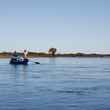
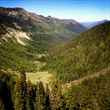
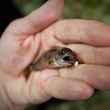



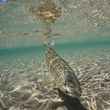




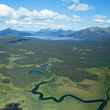
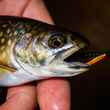



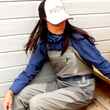
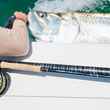



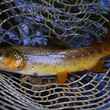
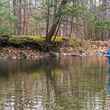

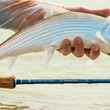
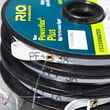
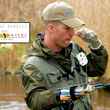
Comments